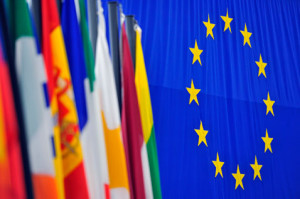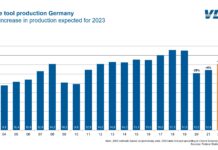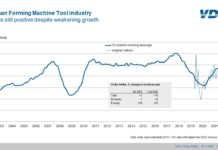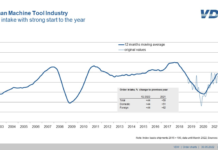 What is the impact and the public perception of intellectual property in the economy of the European Union (EU)? In order to answe to this, the observatory is undertaking a programme of socio-economic studies
What is the impact and the public perception of intellectual property in the economy of the European Union (EU)? In order to answe to this, the observatory is undertaking a programme of socio-economic studies
The importance of intellectual property rights (IPR) to society and the economy in Europe has become increasingly clear in recent years.
A study on the contribution made by IPR-intensive industries to the EU economy carried out in 2013, in partnership with the European Patent Office, demonstrated the importance of those industries. It showed they support directly or indirectly 35% of jobs, almost 39% of the EU’s GDP and 90% of exter- nal trade. OHIM, through the European Observatory on Infringements of Intellectual Property Rights, has now carried out a follow-up study delving deeper into the influence of these rights at the firm or company level. This study, based on official public financial data from more than 2.3 million EU firms, covers companies which own patents, trade marks and designs (and any combination of the three). The study shows that large companies are four times more likely to own IP rights than smaller com- panies – 40% of larger firms have registered rights, compared with 9% of SMEs. It also shows that companies that own IP rights perform better than those that do not. This is a particularly significant finding for the 1.8 million SMEs that have registered IP rights, since they represent such an important part of the EU economy.
The results demonstrate that businesses that own Intellectual Property Rights generate more revenue per employee than those that do not, have more employees and pay higher salaries to their workers and that this relationship is particularly strong for SMEs.
This is a very important message for Europe’s businesses and policymakers, highlighting the virtuous cycle between IP and economic performance. While it should not be interpreted as es- tablishing a causal link between the ownership of Intellectual Property Rights and higher revenue per employee, there is nevertheless an indication of a relationship between the two.
Report will feed in to a number of Office projects including the upcoming SME Scoreboard. This Scoreboard is designed to examine in greater detail the use that SMEs make of IP rights and will be drawn up by OHIM, through the Observatory, in partnership with the European Commission.
Main findings
As Table 1 shows, firms that own IPRs tend to be larger than firms that do not, as measured by the number of employees (547 vs. 94 employees on average). For this reason, economic perfor- mance metrics such as revenue, profits or wages are expressed on a per-employee basis. Thus, firms that own IPRs have on average 29 per cent higher revenue per employee than firms that do not. This can be regarded as one of the central results of this study. In terms of individual IPRs, the average performance premium experienced by IPR-owning firms is 26 per cent for pat- ents, 29 per cent for trade marks and 31 per cent for designs. Table 1 also indicates that firms that own IPRs pay on average 20 per cent higher wages than firms that do not. Here, the strongest effect is associated with owning patents (41 per cent), fol- lowed by design (23 per cent) and trade marks (19 per cent). Although in terms of revenue per employee, patents, compared with trade marks and designs, seem to be less associated with “extra” performance, they are the IPR type that on average generates the highest rewards for employees.
Table 1: Average values of selected variables by IPR ownership
| Number of employees | Revenue per employee (EUR/year) | Wages per employee (EUR/year) | |||||
| Non-owners of IPR | 93.6 | 225 540 | 37 996 | ||||
| IPR owners | All IPRs 547.3 | 290 106 | 45 520 | ||||
| % difference compared to 484.6%
non-owners |
28.6% | 19.8% | |||||
| Patents 1 537.6 | 283 567 | 53 424 | |||||
| % difference compared to 1 542.6%
non-owners |
25.7% | 40.6% | |||||
| Trade marks 569.9 | 292 011 | 45 139 | |||||
| % difference compared to 508.8%
non-owners |
29.5% | 18.8% | |||||
| Designs 2 103.1 | 296 316 | 46 747 | |||||
| % difference compared to 2 146.7%
non-owners |
31.4% | 23.0% | |||||
Note: Based on available observations of 132 277 firms. All differences are statistically significant at the 1 per cent level. The group of ‘All IPR owners’ is defined as firms that owned at least one patent, trade mark or design, or any combination thereof. The groups of ‘ Patent owners, ‘ Trade mark owners’ and ‘ Design owners’ are defined as firms that owned at least one of the particular IPRs. Since many firms owned combinations of the three IPRs, the owners of the various IPRs overlap.
Table 2 confirms the positive association between IPR ownership and economic performance, with revenue per employee 28 per cent higher for IPR owners than for non-owners In addition, the analysis shows that this relationship is particularly pronounced for small and medium-sized enterprises (SME).4 This report uses the definition based on the number of em- ployees and turnover. SMEs that own IPRs have almost 32 per cent higher revenue per employee than SMEs that do not own IPRs at all. The econometric analysis shows that increases in firm performance depend on type and combination of IPRs. The highest revenue-per-employee increases are linked to trade mark-only and combined trade mark-and-design owners: 30 per cent and 39 per cent, re- spectively. Patent-only owners have 15 per cent higher revenue per employee, design-only own- ers 15 per cent, patent-and-trade mark owners 17 per cent, patent-and-design owners 15 per cent and owners of all three IPRs 16 per cent. The figures above reflect binary comparisons. In other words, firms that do not own a particular IPR are compared with firms that do own it. Using econometric analysis, it is also possible to calculate the effect of increasing the number of IPRs owned by a firm. This type of analysis shows that a 10 per cent increase in the stock of European trade marks of a firm is associated with a 2.8 per cent increase in revenue per employee, a 10 per cent increase in the stock of national trade marks is associated with a 5.2 per cent increase, while for patents a 10 per cent increase in the stock of European patents leads to a 1.8 per cent increase and a 10 per cent increase in the stock of national patents to a 4.6 per cent increase. For national designs the analysis suggests that a 10 per cent increase in stock is associated with a 0.7 per cent increase in performance. For the other IPRs the econometric analysis could not establish a statistically significant relationship, which means that it is not possible to state with more than 90 per cent confidence that there is a posi- tive relationship between increases in a company’s stock of the relevant IPRs and its economic performance.
Table 2: IPR ownership and revenue per employee by firm size
| Difference in revenue per employee of IPR owners compared with non-owners of IPR | |
| Large companies | + 4.0% |
| SMEs | + 31.7% |
| Total | + 28.0% |
Note: Based on observations of a total of 130 555 firms. Differences are statistically significant at the 99 per cent confidence level



